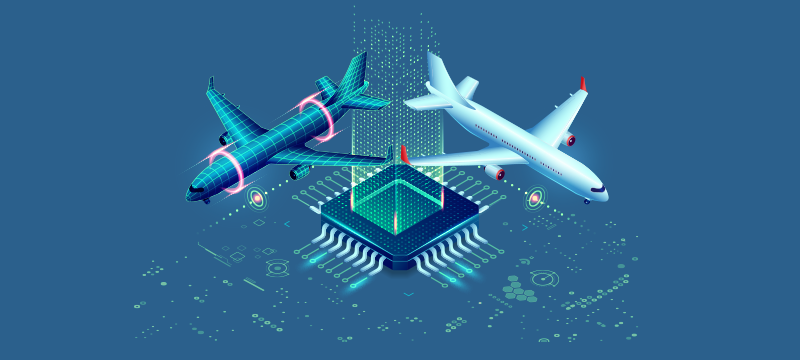Take a historical look at business and there is a multitude of examples of companies that have invested heavily in new products, systems and processes only to see them fail miserably. Today, the ability to create digital twins means such risk can, for many enterprises, be eliminated. It also means that smaller companies can compete with larger rivals as they can develop new products virtually and, therefore, less expensively, before commencing physical production. Here we look at what digital twins are, their uses and their benefits
Digital twins – an overview
A digital twin is a virtual model of something physical. It can be a product, a building, an urban system, a manufacturing process or many other things. Using data from the real world, the digital twin can run virtual simulations to see how it performs and from this, gain insights into how the physical twin can be improved. For example, civic engineers wanting to reduce urban traffic congestion would use real-life traffic data to simulate the impact of traffic light timings in reducing traffic jams.
What’s more, as a digital twin is based in a virtual environment, it can run other useful simulations at the same time. In the example above, for instance, the same twin could be used to look at how the introduction of bike lanes would impact air quality, how signage placement could reduce accidents and so forth.
Different kinds of digital twins
Digital twins come in various kinds. The smallest in scale is a component twin. This is basically where an enterprise creates a twin of one part of a product or process, e.g., the battery of a phone. Slightly more advanced is the asset twin, this is when a digital twin is created of two or more components – for example, both the battery and the processor of the mobile phone. There is more value here as performance data can be generated by analysing the interaction between the two components.
The next level of scale is the unit twin. This is when virtual asset twins are combined to create a functioning system. With regard to the smartphone example above, this might look at how apps impact the battery and CPU and, from this, help developers make improvements to individual components of the phone.
The most advanced type of digital twin is the process twin. This is where virtual simulation can show how well different systems work together. For example, a manufacturing company could simulate the operations of different systems in a factory to help improve efficiency and productivity or cut costs.
How enterprises are using digital twins
Enterprises are benefitting from digital twins in a number of important ways. One of the most common is in improving the development of new products. Simulations in the virtual twin can produce important data that helps the research and development process, leading not just to enhancements in performance and design, but to the eradication of faults that could cause problems after production had commenced. As a result, companies can benefit from better products and fewer recalls.
Digital twins can also help deliver improved efficiency throughout manufacturing processes by mirroring and monitoring the production process, indicating where improvements can be made to optimise the system.
Examples of use
While not every project needs a digital twin, they can be of benefit in all kinds of sectors. While we have touched on manufacturing and civic engineering above, they are also being used by architects, engineers and construction companies to create virtual models of buildings, tunnels, bridges, etc. They not only help in ensuring that these large structures fulfil their purpose and do so safely; but also, that they are sustainable and cost-effective to operate and maintain. Similarly, digital twins are of use in designing complex mechanics, such as in the building of ships, cars and aircraft. They can help with safety, comfort, energy use, performance, efficiency, aerodynamics, material choices and so forth.
The importance of cloud
Creating digital twins is reliant on the development of virtual environments in which the processing and analysis of data is essential to glean the insights needed for achieving desired outcomes. The best IT solution for building such virtual environments is the cloud. The cloud provides a cost-effective way to procure the necessary infrastructure, while offering high performance together with unlimited scalability. At the same time, many of the applications needed to create these environments are cloud-native, while the connectivity of the cloud makes it ideal for receiving data in real-time from IoT devices and other sensors that may be used in the simulation process.
Conclusion
Digital twins are increasingly being used across all sectors to improve the development of processes, systems, structures and products. They enable R&D processes that would be time-consuming and expensive in the real world to take place in virtual environments, speeding up development while reducing cost. At the same time, digital twins help improve safety, efficiency, performance and quality. For more information about our cloud solutions, visit Hyperslice.com.

